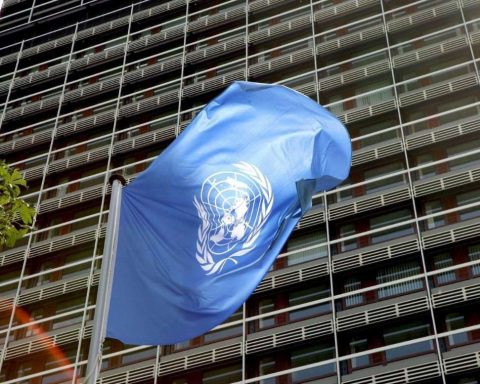
He National Center for Child and Adolescent Health will have a 68.4% cut in its budget for the following year, going from 14,722 million pesos in 2024 to 4,657 million pesos for 2025. Although in Mexico between 2018 and 2022 there was a reduction of around two million in the population children and adolescents, in terms of health there are important challenges in that segment of the population.
For example, the infant mortality rate has increased, although slightly, from 12.92 per 1,000 live births in 2018 to 13.3 in 2022. There are entities such as Chihuahua, Yucatán and Tlaxcala that exceed 14.
On the other hand, there are some diseases, whose records should set off the alarmssuch as the incidence of cancer in that segment of the population, since in 2018 2,249 new cases were reported and in 2023 more than 3,500. Furthermore, we have not reached full vaccination coverage.
Calculations by the organization Pact for Early Childhood indicate that in Mexico there are 5,699,781 boys and girls under six years of age without affiliation to health services; 632,331 have limitations or disabilities; 702,764 children under five years of age have anemia and one million 322,851 children under five years of age also have chronic malnutrition.
The details of that panorama are as follows:
There are two million more children and adolescents than in 2018
According to him National Institute of Statistics and Geography (Inegi)in 2018 in Mexico there were 38.3 million girls, boys and adolescents between 0 and 17 years old, of which 11.4 million were five years old or younger; 26.9 million from 6 to 17 years old.
In April 2024, the institute reported that, according to the National Survey for the Care System (Enasic) 2022, 36.3 million people from 0 to 17 years of age resided in the country, (two million less than in 2018) of the of which, 10.5 million, were under 6 years old and 25.7 million, between 6 and 17 years old.
According to the specific care program Child Health Care 2020-2024from the Ministry of Health, in 2018, almost 29,000 children under one year of age died annually in the country, that is, 80 per day or three every hour.
“A significant number of these deaths refer to deaths from preventable causes, such as acute diarrheal diseases (ADD) and acute respiratory infections (ARI).”
According to the data recorded in the Information System of the Ministry of HealthIn 2018, the infant mortality rate was 12.92 per 1,000 live births.
In 2022, according to the National Statistical and Geographic Information System (SNIEG)In 2022, the rate was 13.3 per 1,000 live births. In Chihuahua and Yucatán, the rate is 17.7 and in Tlaxcala 14.5.
It is striking that in 2019 the Inegi reported that from 2000 to 2016 this rate had been decreasing, going from 20.8 in 2000 to 12.1 in 2016.
According to the specific action program “Childhood health care 2020-2024”, of the Ministry of Health, the cause of the enormous differences in the matter between states is multifactorial, therefore, care programs must consider this heterogeneity in its design and implementation.
The document highlights that “Over the last decades, Mexico has made considerable progress in reducing infant mortality; however, important delays still persist, so that the effort to prevent infant deaths is far from being considered complete.” .
The reports of deaths under 5 years of age during 2018 indicate that of the 28,056 deaths reported, 84% of these occurred in children under 1 year of age and of these, 65% occurred in the neonatal period.
Cancer cases increase in childhood and adolescence
According to the Childhood and Adolescent Cancer Program, in 2018 there were 2,249 cases of cancer in children and adolescents reported to the Child and Adolescent Cancer Registry (RCNA).
It is striking that between 2019 and 2021 this figure decreased until it reached 1,356, but in 2022 it increased to 1,573.
According to the 2018-2024 government management report of the National Center for Child and Adolescent Health (Censia)“The estimated figures from July 1 to September 30, 2024, for the 32 states are the number of new cases of cancer in children and adolescents notified to the RCNA of 3,589.”
The prevalence of psychiatric disorders is high
In the case of the mental health In this segment of the population, the Ministry of Health points out that studies carried out in different countries show that the prevalence of psychiatric disorders in the adolescent population is between 8% and 45%. The same source states that “the estimates for Mexican adolescents are among the highest.”
According to the specific action program Attention to adolescent health 2020-2024, the greatest impact of mental disorders is the disability, social disadvantage and economic backwardness experienced by adolescents who have a mental disorder.
It refers that the data of the Mexican Adolescent Mental Health Survey showed that about 51.3% of adolescents between 12 and 17 years old met criteria for a mental disorder at some point in their lives; Anxiety disorders being the most prevalent (40.6%), particularly phobias, both specific (27.9%) and social (14.3%), among the most frequent diagnoses.
In the case of dysthymia and post-traumatic stress, the disorders that cause the most days lost are considered, major depression and bipolar disorder around two weeks, and panic disorder and attention deficit almost a week.
Vaccination coverage is 86.6%
In terms of vaccination coverage, in 2023 a national average of 86.6% was recorded. Although it is striking that in the particular case of the BCG vaccine against tuberculosis that year the average coverage was 94.9%when in 2021 it had reached 99.0%.
According to the Pact for Early Childhood collective, in Mexico, more than two million boys and girls under six years of age are at risk of not reaching their full potential, almost half of boys and girls do not have their vaccinations complete, and Around seven million boys and girls under six years of age live in poverty.
Alberto Sotomayor, research coordinator of that organization, pointed out that in the budget for 2025, the Strengthening Medical Care program of the recently created IMSS-Wellbeing, which brings health services closer to the population living in marginalized or difficult-to-access areas, increases by 97% in real terms and in terms of child care, the services offered by both the IMSS and the ISSSTE will increase by 4% and 14% respectively.
However, it highlights that the budget reduction to the vaccination program of 18% in real terms with 260 million less, in addition to the fact that the total budget of the program will decrease 69% in real terms with 9,459 million less than in 2024.
In his opinion, this is clearly insufficient to counteract the loss of effectiveness that has been suffered for decades, as reflected by the abrupt falls in vaccination coverage in 1 and 2-year-old children, which means obstacles to protect and guarantee the fundamental right to health through immunization against preventable diseases with epidemic potential.













